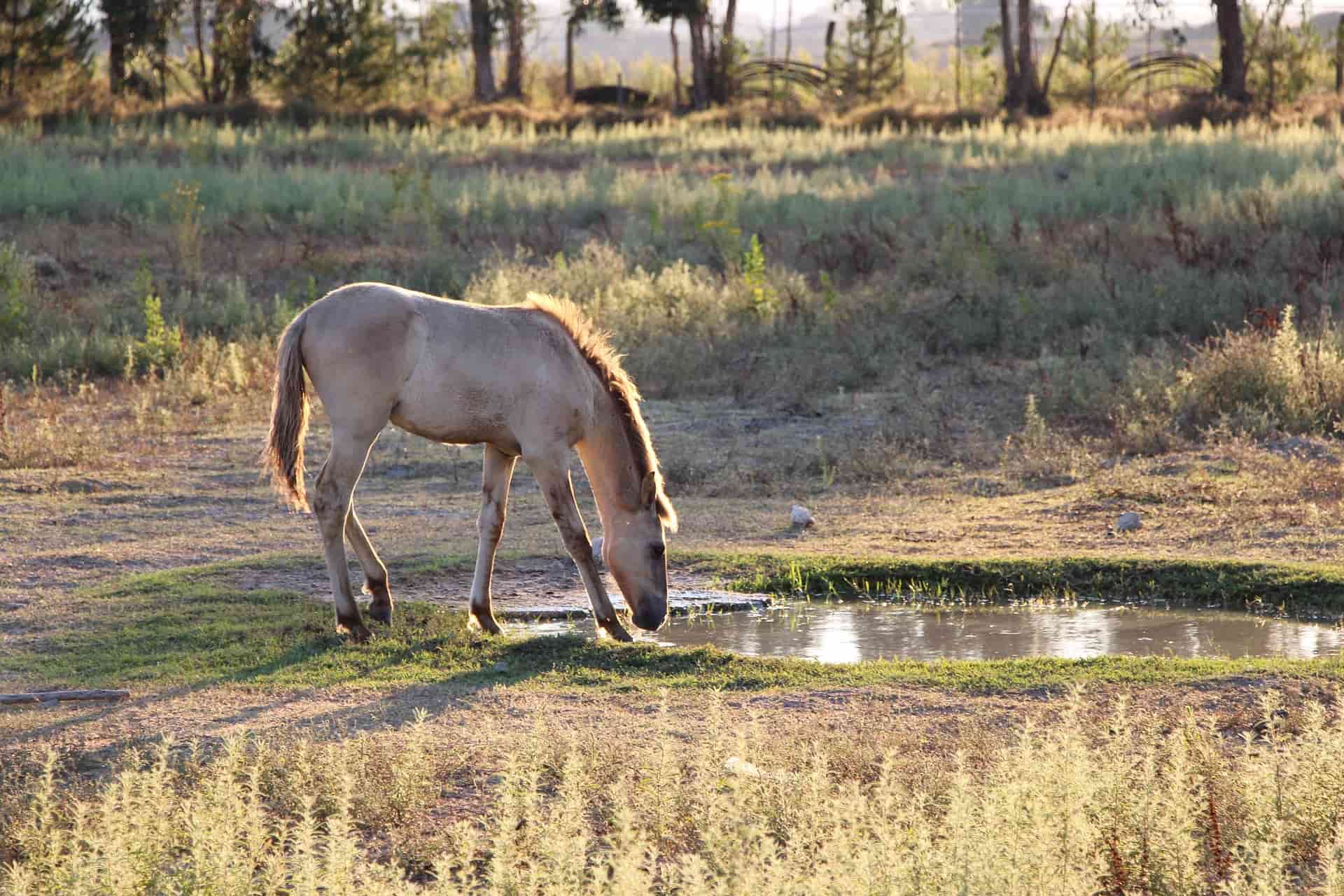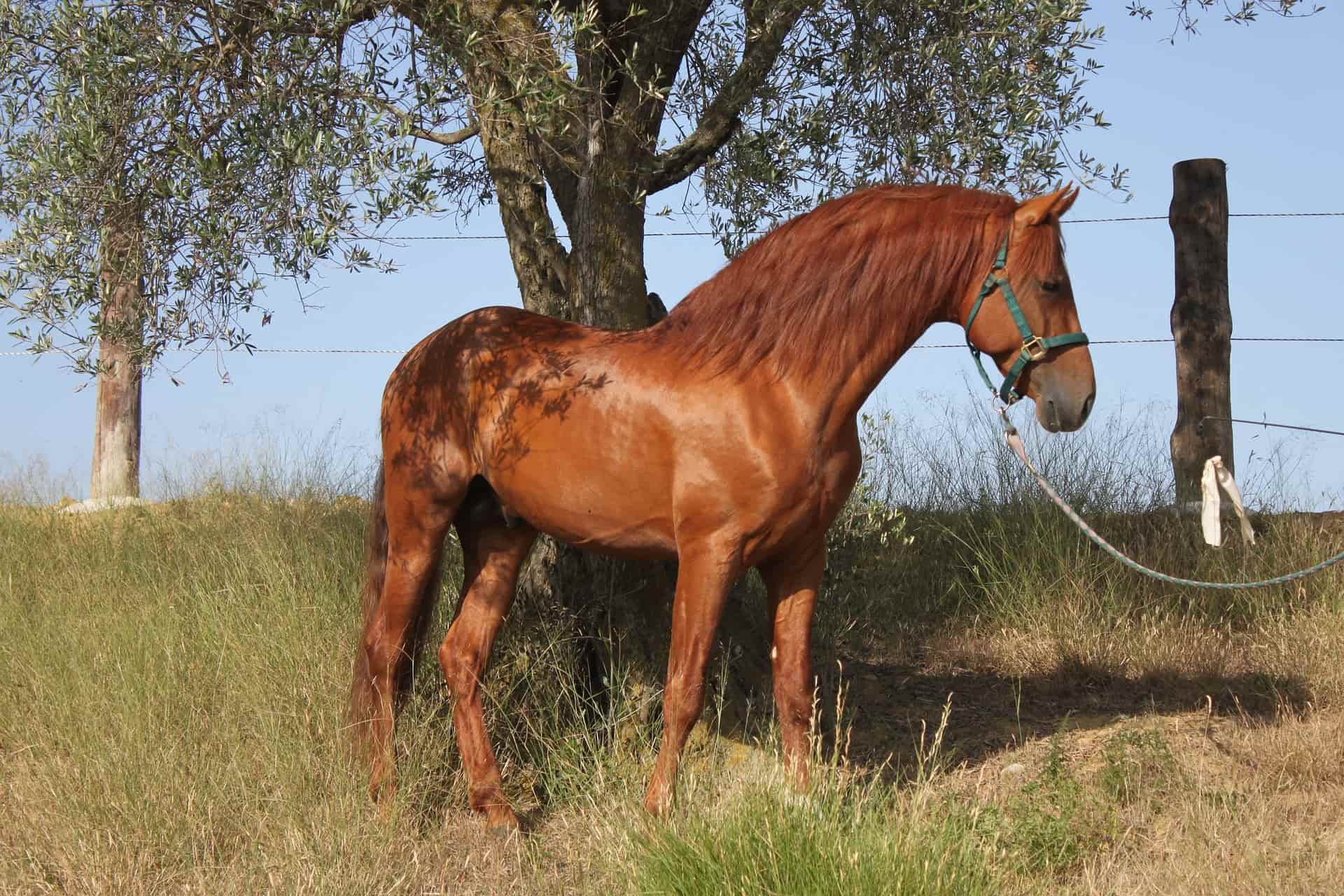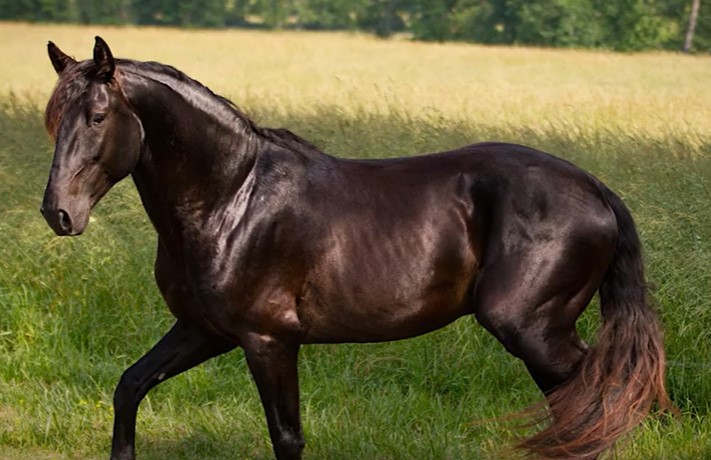Very few people get the privilege to set their eyes on the Sorraia horse breed in person. Considered an ancient horse variety, the Sorraia dates as far back as when the Iberian Peninsula still existed. Today, they’re recognized as the last remaining indigenous horses of their area.
With as few as 200 individuals, the Sorraia horse easily qualifies as one of the rarest horse breeds across the globe. And because of its mysterious history, the Sorraia horse inevitably draws in the curiosity of many horse enthusiasts the world over.
History and Evolution of the Sorraia Horse
The name Sorraia comes from the words Sor and Raia— two prominent rivers that passed through and irrigated the fields south of the Iberian Peninsula.
But while its name origins are clear, it’s not entirely certain where the Sorraia horse itself originated. As of writing, experts agree that it is a remnant population the same breed of horses that roamed southern Iberia hundreds of years ago.
One of the Last Primitive Horses
The breed is so old in fact that archaeologists claim finding cave paintings from the Paleolithic era depicting the Sorraia horse.
Recommended Reading: Famous Horse Paintings (Equestrian Art)
According to experts, the zebra-striped cave drawings from the Ice Age demonstrated a distinct likeness to the Sorraia, giving them substantial reason to believe that the horses had become a domestic breed even during prehistoric times.
Unfortunately, Sorraias were pushed to the brink of extinction as they lost much of their natural habitat due to human activity. Much like the Przewalski’s horse (known to many as the wild Mongolian pony), Sorraia horse numbers sharply declined as they were pushed into smaller territories by industrialization.
For the most part, the history and origins of the Sorraia horse remain unfortunately unknown. Presently, the only existing records for the Sorraia can only go as far as 1920.
Discovery of the Sorraia
It was during this time that Dr Ruy d’Andrade decided to make an account of the intriguing breed. The zoologist stumbled upon the distinct Sorraia during one of his hunting trips in the Portuguese lowlands.
There, he observed a small herd of 30 horses which appeared feral and to him, even primitive. Their striped coats captured his attention and gave the impression that the animals were either related to zebras or asses.
He later captured seven mares from the group of wild horses and kept them in a protected enclosure on his own property. To propagate the wild horses, he introduced four males into the small population.
While his preservation efforts were instrumental to the continuing presence of Sorraia horses today, his small breeding herd was painfully subject to widespread inbreeding. Unfortunately today, the 200 remaining Sorraia horses in existence all share one paternal line, making preservation of the breed a challenge.
Modern Day Sorraia Horses
Through the work of Dr Ruy d’Andrade, scientists and zoologists were able to identify the Sorraia as having a strong role in the development of breeds such as the Lusitano horse and the Andalusian horse.
It’s also postulated that individuals from the Sorraia horse herds were brought to South and North America where they were bred with local horse breeds.
This has been said to contribute to the development of the iconic Mustang which demonstrates strong characteristics that typify the Sorraia, including its dun variation coat and primitive markings.
Experts also suggest that Sorraia genetics may play a role in various breeds available in Northern Africa, however it’s not entirely clear whether human intervention played a role in its presence in that part of the world.
The Future for Sorraia Horses
The largest threat to the preservation of the Sorraia breed is inbreeding. Because all existing Sorraias on record share a paternal line, experts believe that allowing small groups of the horses to intermingle and propagate could spell trouble for succeeding generations.
Today, a group of European scientists are working round the clock to protect the Sorraia. According to their findings, human intervention might be the only way to preserve the species. They suggest enclosing all of the available Sorraia horses in a safe location and leaving them to live wild or semi-wild.
This should allow natural selection to run its course, leaving the strongest, fittest individuals to thrive. Over the course of several generations, experts hope that this will strengthen the breed’s genetic resilience in order to offset its current endangered status.
In Canada, small groups have also exerted efforts to protect the Sorraia. Particularly noteworthy is the Sorraia Mustang Preserve — a privately owned operation on Manitoulin Island in Ontario. Here, the owners attempt to propagate the Sorraia horse by crossing their two available individuals with select breeds of Spanish Mustangs.
Suggested: The Most Magnificent Crossbreed Horses
Qualities of the Sorraia Horse
The dusty breed stands with pride and elegance. Although a relatively small horse, the breed touts a commanding presence that captivates onlookers. And similar to many Iberian breeds, the Sorraia possesses a pleasing personality and a rugged physique fit for labor-intensive roles.
Basic Information on the Sorraia Horse
- Average height: 14 to 14.3 hands
- Average weight: 900 lbs
- Average lifespan: 25-30 years
- Coat color: Dun coloring (often yellow dun or ‘grullo’)
- Personality: Noble, brave, born survivors
- Prevalence: Portugal, Germany (see German breeds)
- Population: 200
- Status: Endangered
Physical Characteristics
The Sorraia horse possesses qualities that you would expect from a wild horse. Bearing the characteristics it developed throughout the harsh, demanding conditions of its wild existence, the horse is a sturdy, stocky, small horse with primitive features.
Horizontal striping covers the neck and chest of the adult Sorraia, beautifully captured by photographer Hardy Oelke. The same white markings can appear all over young foals, making them look as though they’re black and white horses closely related to zebras. This coat pattern is called ‘hair stroke.’

Although showcasing a dusty dun or grullo color all over, the horses have a dark muzzle area. The darkened primitive markings also exists on other parts of its body, including black tipped ears and a black dorsal stripe lining the entire length of its back.
Their bi colored manes combine lighter colored hairs with dark brown or black hair strands. Their bodies are strong and muscular, touting well defined tendons, powerful, prominent muscles, and hard hooves that speak volumes about the breed’s history as a wild horse in the Iberian peninsula.
Because of their history roaming the uncultivated lands and salt marshes near the Portuguese river Sorraia, theses horses evolved to be particularly easy keepers. Even on scarce diets, the Sorraia easily maintains a substantial layer of fat to keep warm during the cold months.
Personality and Temperament
According to the accounts of people who have worked with the Sorraia, the breed is a fairly docile creature despite being one of many wild horse types. Once domesticated, the breed demonstrates excellent trainability, learning new tricks and skills without much struggle.
Although they probably won’t nestle up next to their owners in the same affectionate way that other breeds do, the Sorraia will form a strong bond with its handler. Being pack animals, Sorraia horses feel most comfortable and content in tightly knit groups.
Aside from its calm, personable demeanor, the Sorraia also touts exceptional confidence in its physical capabilities. The hardy animal boasts superior strength despite its size. In combination with its high IQ, the horse joins the ranks of some of the most well-rounded breeds in existence.
Frequently Asked Questions
Can wild Sorraias be domesticated? Yes, and many have actually succeeded at training these powerful steeds. Keep in mind though that it takes particular experience to know how to handle and train these wild horses. So unless you’ve had previous experience, it’s best to leave the process to professionals.
Can you buy a Sorraia horse? Although very rare, it is posisble to find and purchase a Sorraia horse. However because of their endangered status, the organizations and associations that work to protect the breed strongly discourage pleasure breeders and ranchers from acquiring the horse as this risks cross-breeding.
How much does a Sorraia horse cost? Sorraia’s are not a cheap horse breed. Because it is so rare, it remains a fairly expensive breed to acquire. Prices for the horse do not dip below $10,000, and may significantly increase depending on its health, size, sex, lineage, and appearance.
Do all Sorraias look the same? For the most part, purebred Sorraias share the same appearance. With a black dorsal stripe black tipped ears, and a stocky, muscular form, these animals are especially identified by their white markings which exist on the coat of every horse in the lineage.
A Testament to Perseverance
Despite all of the struggles the breed faced throughout its centuries-long existence, the Sorraia horse has managed to persevere and defeat the odds. So even with its dwindling present day numbers, hope remains that the horse breed will yet rise and cement its presence and purpose in today’s ecosystem.
A sturdy, persistent, beautiful breed of horse worthy of admiration and respect, this breed stands as living proof of why we should all work hard to preserve and protect the majestic creatures we share our world with.




